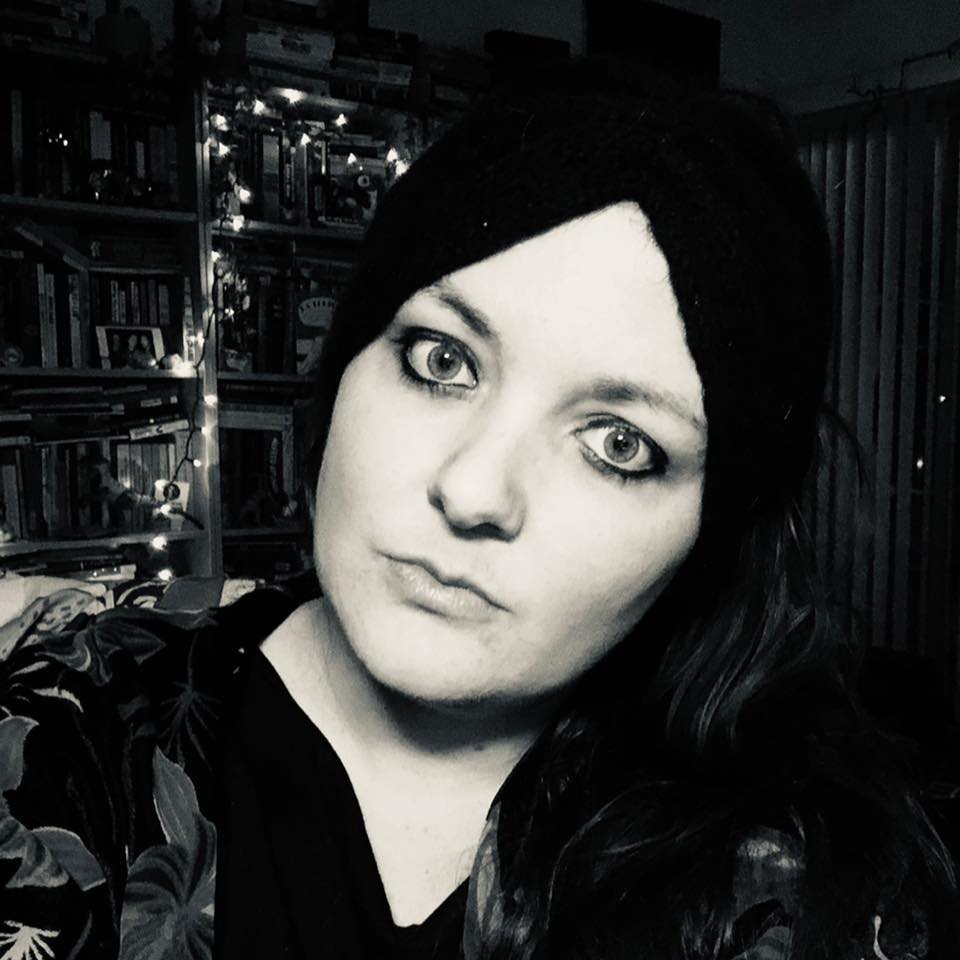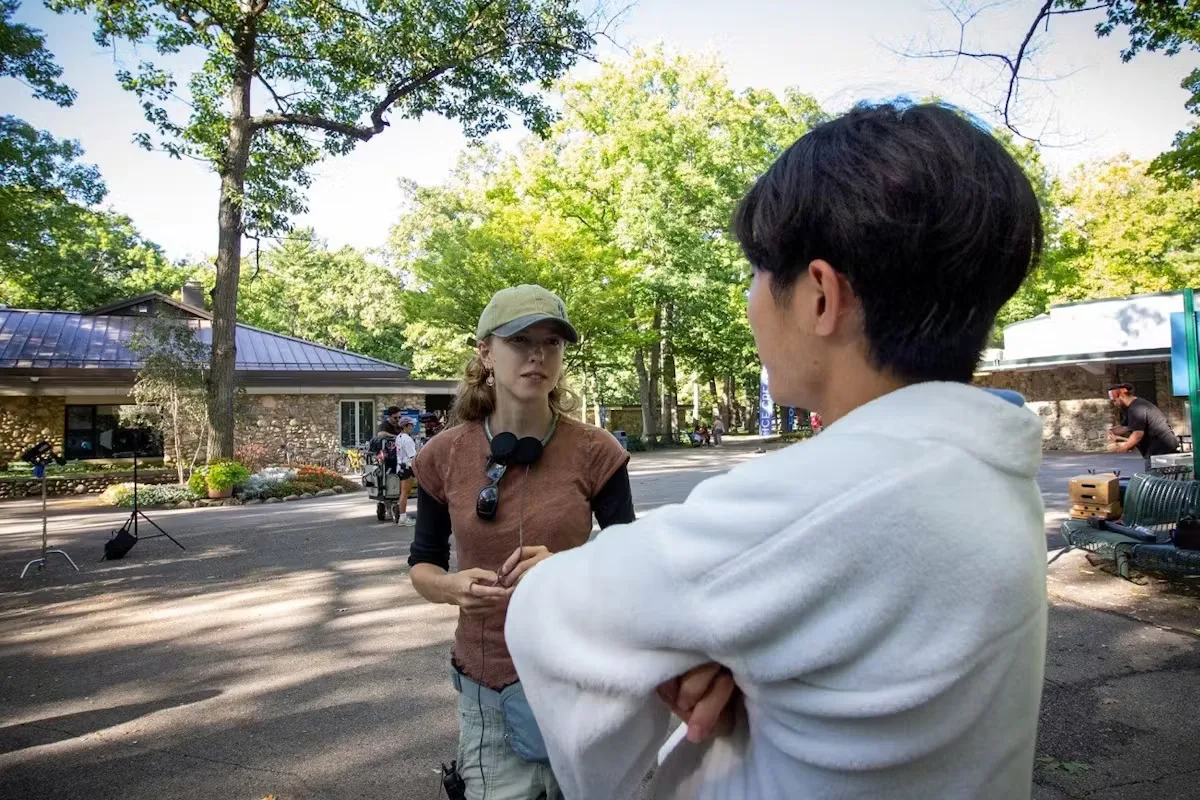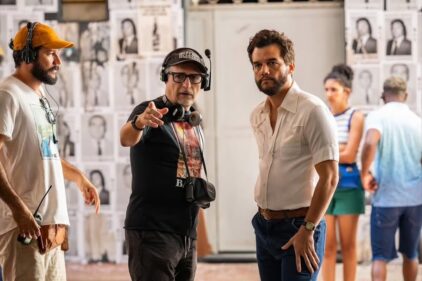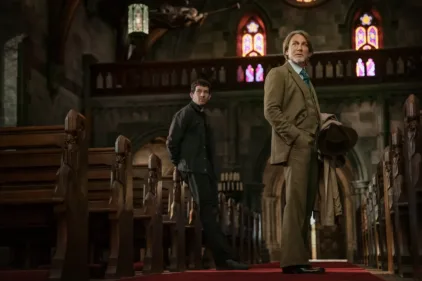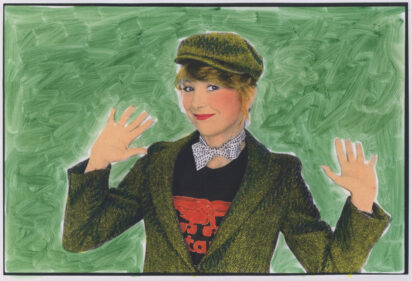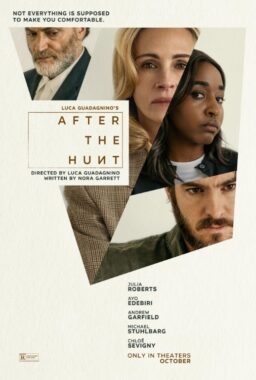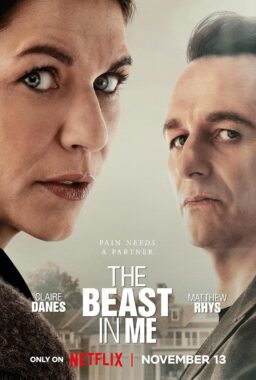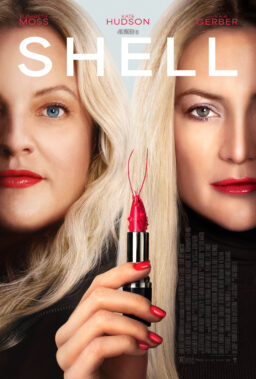Filmed on location in and around Green Lake, a remote lake in northern Michigan, “Sunfish (& Other Stories on Green Lake)” is a gorgeously rendered tribute to writer-director Sierra Falconer’s hometown. Developed as Falconer’s senior thesis film for UCLA’s M.F.A. film program, the sun-kissed anthology perfectly captures the warmth and nostalgia of spending a hot and lazy summer day by the lake’s sparkling waters.
Falconer grew up in Traverse City, Michigan, just ten miles from Green Lake, where she spent many summers at her grandparents’ lakefront home. As she developed her thesis, she could not get her home out of her mind. A desire to emulate the feeling of a summer on the lake led to the film’s chaptered, yet fluid structure. The parts, entitled “Sunfish,” “Summer Camp,” “Two Hearted,” and “Resident Bird,” follow a handful of characters as they spend their summer days growing up, coming of age, and working in the confines of this, sometimes magical, small town.
These characters include a 14-year-old girl named Lu (Maren Heary) spending the summer at her grandparents’ lake house after her mother impulsively elopes on the last day of school; the high strung teen musician Jun (Jim Kaplan, real-life student at the prestigious Interlochen Arts Camp), whose overbearing mother wants him to become the first chair violin in the Chicago Symphony Orchestra by the time he reaches eighteen; single mother Annie (Karsen Liotta) who joins a customer (Dominic Bogart) on his quest to catch a mythically large fish; and a pair of sisters, Robin (Emily Hall) and Blue (Tenley Kellogg), whose humble family-run bed-and-breakfast is visited by a family from Hollywood.
The film, which is executive-produced by Joanna Hogg, had its debut at the Sundance Film Festival, where it competed in the U.S. Dramatic Competition. It was picked up for distribution by Caryn Coleman’s The Future of Film Is Female, with plans for a more bespoke, targeted release focusing on the Midwest market.
For this month’s Female Filmmakers in Focus column, RogerEbert.com spoke to Falconer about her film’s calming tone, the nostalgia for home, rural soundscapes, and the pleasures of filming on location.
There were so many depressing movies at Sundance this year, and this one is just so calm and serene. I know that one of your goals was to capture that timelessness of summer by the lake. I would love to hear how you achieved that feeling.
That was really important to me—to capture the feeling of the lake. That’s something I grew up with, and I almost didn’t even know how to put that into words. It’s been very interesting to hear people speak about it and describe how the movie feels to them, because to me, that feeling is home and a sense of nostalgia for my childhood. I had a very comforting and relaxing childhood, as you can probably tell from the film. So, I was trying to capture that in the movie, finding these little moments of change that were lessons I learned or things I felt growing up on the lake, and the way the lake changed me and influenced me, and what it feels like to be there. So I think the feeling of the lake, and that calming, relaxing tone, really came from just the truth of the place. That’s just what it’s like to be there.
You’ve said the story structure sort of came from the goal of achieving this feeling, and you needed several perspectives to really capture that feeling. I wondered if you studied, as you were working on that structure, any short story collections or films like “Short Cuts” or “Slacker” that have a similar vibe to them?
I watched a lot of anthology films. And I love short story collections, so I’ve read a lot of them. One film that I revisited frequently was Rebecca Miller’s “Personal Velocity,” which I love. What I noticed is that a lot of the short story collections have a cut to black, or there’s an obvious distinction between each short. I knew that with this film, I wanted it to be more fluid, more like an Altman film, like “Nashville,” where it moves between the people, because I wanted it to feel like a small town community where you know the people around you, you know their faces, you might not know their names. Still, you don’t always interact with each other. You might not be friends, but you exchange pleasantries, but you’re not talking to each other every day. So I wanted that feeling of being in each other’s spaces. We share this place, but we don’t share a lot of communication or interactions.
Obviously, with these four stories, you have these different ages and different socioeconomic backgrounds. You mishmash in between different kinds of jobs, retired people, high-strung children, etc. What was your process in developing those characters?
It came from just the place and the truth of the place. I knew there were certain locations I wanted to visit around the lake. I knew I wanted to go to the camp, and that was such an interesting place, because that’s where all the out-of-towners stay. It’s always people coming from out of town to be at the camp just for the summer, and they don’t really leave the camp. They just stay there. So that was very interesting to me. I knew I wanted an older couple who were modeled after my grandparents; that was really important to me. Then I knew I wanted somebody who felt stuck in the town. So, the third story is about Annie and Finn, who wished they could have gotten out but got stuck there. Then I wanted someone who was getting ready to leave and was going to get out. So, it was really taking all these different people that I’d observed and people I had been with at one point, and trying to fit them all in.
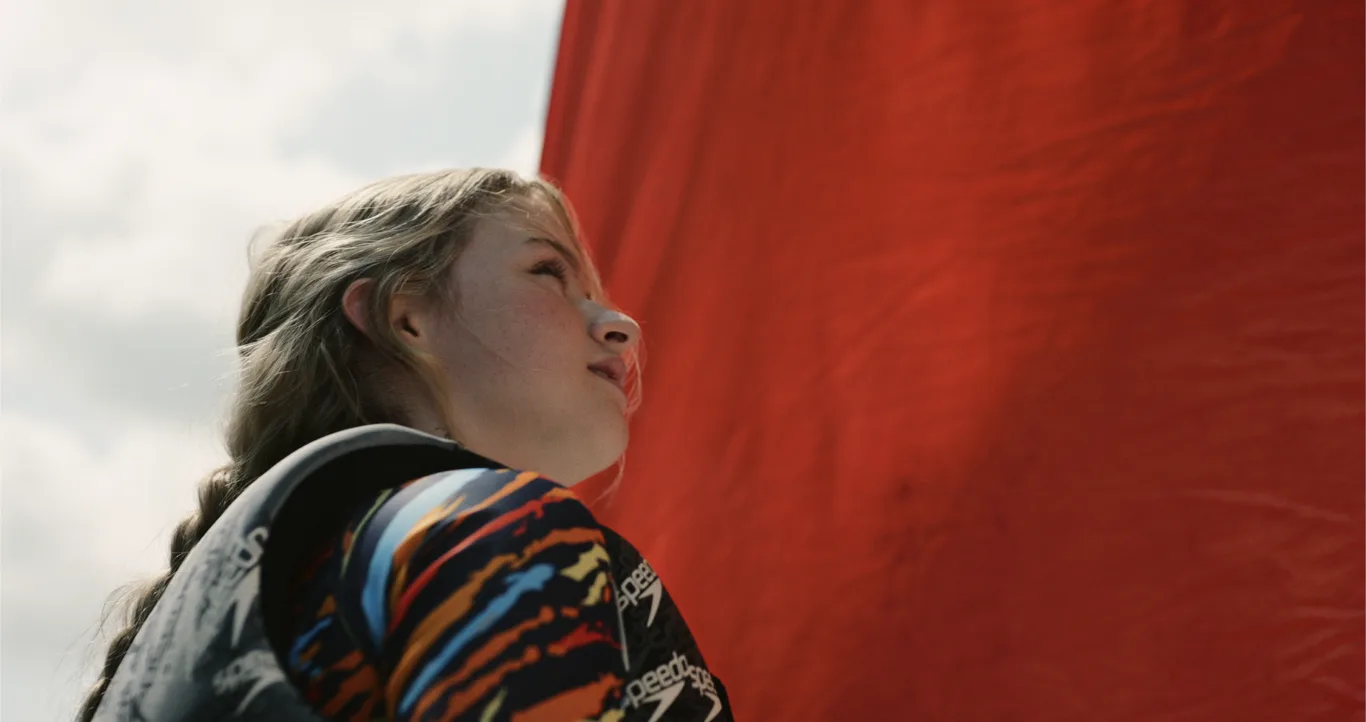
When you went back to make the film, did you have any feelings of wanting to come back home in a more substantial way?
When I was a kid, I couldn’t wait to leave. I was really eager to get out. But then I couldn’t shake it. I just kept thinking about it. That’s how I landed on this story as my first film. I just couldn’t really think about anything else creatively; it was such a part of me. So going back was really cathartic, to put all of this into a little package that now I can share with people. Bringing the cast and crew was also so interesting because they’re mostly my classmates at UCLA, who came to work with me. So bringing all those people into what feels like a past life was really interesting, building this together. My family was so involved as well. My parents, sisters, and grandparents were all on set. So it was like this intermingling of different worlds, and it felt very cathartic.
Chicago is a special place in the film; it’s the big city that the characters talk about. It was also a big part of your filming. I read that your dad had to drive five hours there and five hours back to pick people up. As you developed the film, were you always thinking of having Chicago as this beacon in the background for some of the characters?
Yeah, Chicago was like a beacon for me growing up. We would go there, you know, once every other year, and see a show, and I thought that was so cool. Chicago was where all the arts were. For this film, we got all of our equipment from Chicago. We flew all of our cast and crew into the Chicago airport. So we were really back and forth a lot of times. It’s an equal distance to Chicago and Detroit from Traverse City. So, those were the two big hubs, but Chicago just always felt exotic and fancy. That’s an interesting observation.
I wanted to ask about the sound design. Having grown up in a rural community, I often forget how many birds I hear, for example, or the sound of bugs on the water, things like that. I love that there’s never really a still moment in your film. You always hear something in the background. Was that an important part of your final edit for you, making sure that sound was there?
Yes, the sound was really important to me, and I had even written it into the script, including various sounds that we hear. I think, moving to LA, one of the first things I realized was it was very loud, but also very quiet, because you hear the city, and then when you don’t hear the city, you hear nothing. And in Michigan, or in rural areas in general, you always have the sounds of the lake, the birds, or the animals. It feels like nature is almost cradling you, and you feel deeply connected to it in that way. I think that was really important to me, capturing how the people live so harmoniously with nature. You’re not trying to push it out and create a spot for the people. They are all together. And the birds, of course, are very important. I wanted to hear that throughout. You are introduced to the loon in the first story, and then I was just trying to find ways to bring us back to these different parts. The loon was really the way that we could always come back to that first segment. So, yes, I love sound design. It was a lot of fun to put this together.
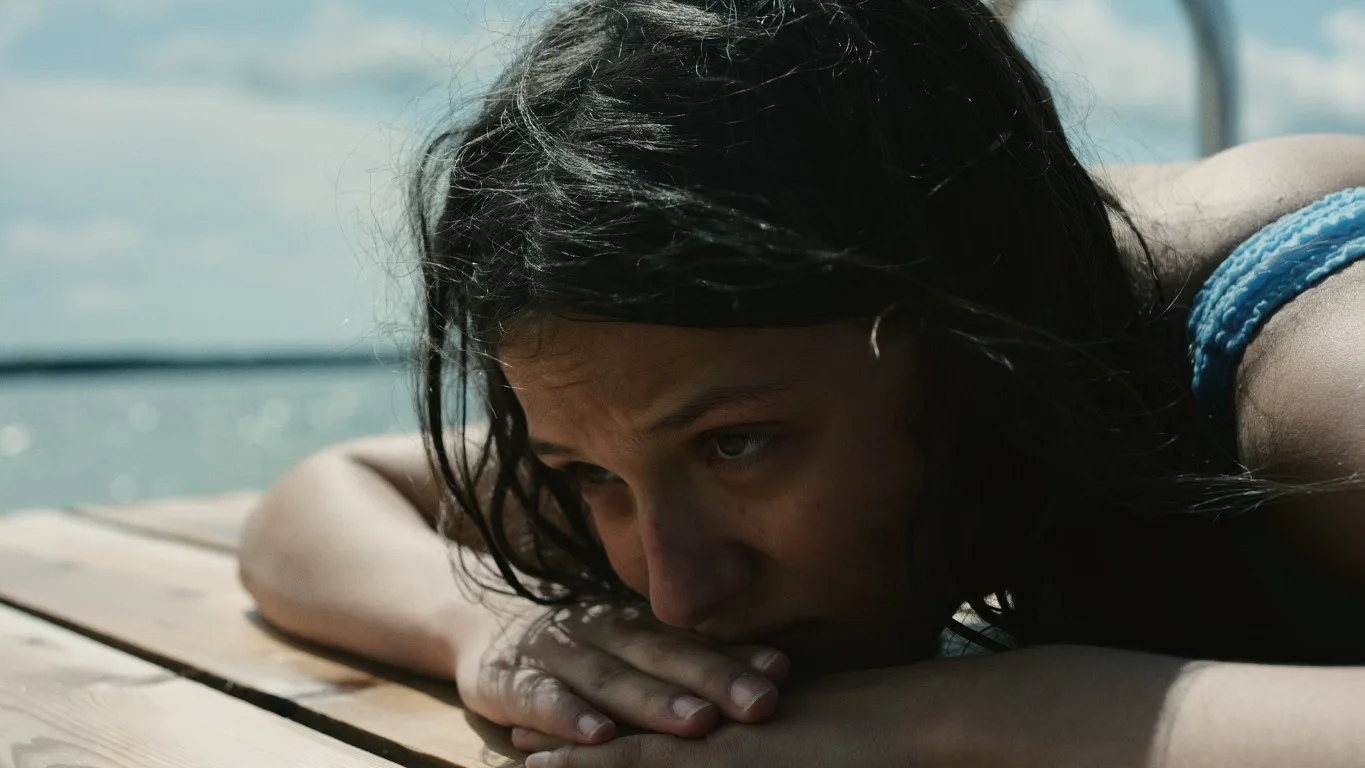
The picture I have in my head is you going around recording birds in the summer in Michigan. Was that something that you were doing? Recording sounds for a sound library?
Yeah, we did do that. We had a little pickup shoot before the rest of the crew came, where we were shooting for the bird inserts. We had a wildlife photographer come to shoot all of our loon shots. We would wake up every morning at around four or five in the morning and go out on the lake. At that time on the lake, because it was so still, all the sounds would travel. I mean, you could hear the bugs, you could hear the birds, and we would record out in the middle of the lake and just get the most fabulous soundscapes. We did that a lot then, because, obviously, during shooting, we just didn’t have time for that, so I’m glad we got it out of the way beforehand.
Obviously, this is a very personal film, and returning home always brings out a lot of emotions. Are there any memories that will stick with you from the making of this film?
My parents would make a whole team dinner every night, and we would have a buffet-style dinner, then sit around tables together or gather around the fire pit. I think wrapping each day and then eating together was such a bonding experience, and very wholesome. I think we all just grew to love each other. It was a truly wonderful moment. The way that my family and friends could really support us and contribute to the film was very special.
Is there some aspect of that style of filming that you’ll bring to your next film, even if it’s not as personal a film?
I loved living with the crew. I think that was really helpful to us, because we were all just so into the project. I think filming on location, you get to do that more. So I would love to do that again. I love filming on location. Maybe we don’t all need to be sleeping on top of each other on bunk beds and on couches, but just being in the same space and being able to chat in the morning and in the evening, and not even necessarily about the film, but just getting to know each other, I think, was very special. I would love to do that again.
Joanna Hogg is an executive producer on this film. She’s such an amazing filmmaker and also a great builder of still worlds, especially with her early trilogy. How did you first start working with her?
I started working with her as her assistant a couple of years ago when she was living in LA working on a project, and I was in prep on this film at the time, and we talked about it a little bit. When she went back to London, I sent her the finished film, and she had a lot of really nice things to say about it. Her coming on as an EP was the most incredible thing for me and for the project. She’s been so supportive and helpful throughout this process, and I’m so grateful to her.
This film is being released by The Future of Film is Female, which has also screened one of your short films. I always love what Caryn does, supporting women from shorts to features. I would love to hear your thoughts on working with her.
I actually didn’t work with her on the shorts. We found her for the feature, and she has since supported some of my shorts and started to include them in some of her programs, which is really awesome. I first met her a couple of months ago. She loved the film, and it’s been incredible working with her. I feel so lucky to be working with her. I think she’s really tailoring our release to something that makes sense for the film, and we’re targeting the Midwest in many ways that I think wouldn’t make sense for other distributors. So I’m so grateful to be working with her. She’s had great ideas about how to get this film out there. And I just love their mission. So I feel so fortunate.
As you work on your shorts and features, do you work on multiple projects simultaneously? Do you start on one and then get the idea for the other in the middle of it? Is that how your brain works?
In the past, I had a very one-track mind about it and was previously doing one project from start to finish. With “Sunfish,” it’s a lot of things at once, which I like because I like to be busy and I like to be working on things. So, it’s a little bit of both. Once I really get moving on something, it’s hard to focus on other things. But during early stages, like development, writing, and ideating, you can have a lot of different things moving at once.
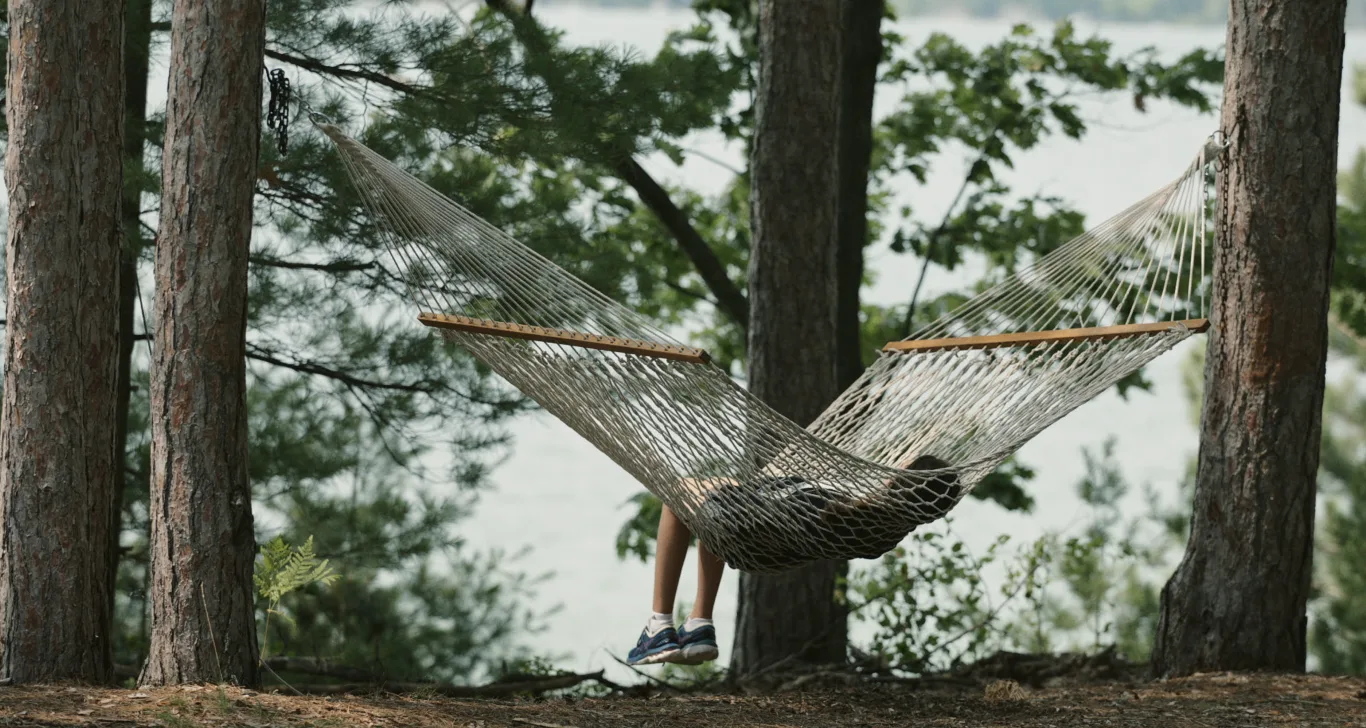
With this film, you were drawing on memory, but do you ever create mood boards or storyboards or any other pre-visualization as you’re working?
One of the first things I do when I’m getting into a project is create a playlist, because I like to hear it. I’m very auditory. I’m not very good at visualizing things, so it helps me to get a moodboard down and create a pitch deck and a lookbook early on. But what it sounds like and what it feels like are the most important. So the playlist and the music are what I go to first.
What was on the playlist for this film?
Adrianne Lenker was on it from the beginning. This artist, named Andrew Bird, uses a variety of instruments.
He’s very Chicago.
Yeah, and then yeah, some Michigan artists. A lot of it made its way into the final film. The playlist is constantly evolving, so it’s hard to know what was on the first one, because I am always adding things in and taking them out.
How do you hope people will feel when they’re done watching the film?
I hope people feel nostalgia for home and for where they grew up, and maybe even a little nostalgia for this place that they’ve never been to, for Green Lake. I think Green Lake is just like the texture of home, and I hope they feel comforted and warm.
We discussed Joanna Hogg, and you mentioned Rebecca Miller. Still, I was wondering if other women filmmakers inspire you, or if there are any films directed by women that you think readers should absolutely seek out?
Oh, my God, so many. I have a long list. One of the films I came back to a lot for this movie was Lucrecia Martel’s “La Ciénaga.” I think it has an amazing soundscape. So I loved that for the sound and the texture. And she shot that in her home as well. So that was a big inspiration for me. I love every Céline Sciamma film. “Petite Maman” is one of my favorites, and was also a big comp for this film. It’s just so quiet and simple, but it’s such a rich story. One of my favorite films of all time is “Mustang,” a Turkish film. I love that movie.
Yeah, those are some interesting comps. I saw “La Ciénaga” for the first time last year at the Gene Siskel Film Center in Chicago, and it was one of those hot, muggy, should rain, but hasn’t quite yet rained, but somehow your skin is wet Chicago days at the end of August, and it was disgusting. Then the movie had that same feeling. I was like watching a movie in 4-D. Her film has almost the opposite feeling from your film. With yours, I felt very calm and comforted, and with “La Ciénaga,” I was like, wow, this is horrible, but horrible in the best sense.
You get the sense she had very different childhood memories and feelings.
Definitely not warm and fuzzy.
No. Definitely not. [Laughs]
